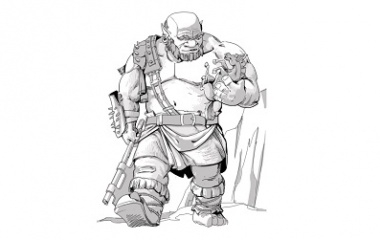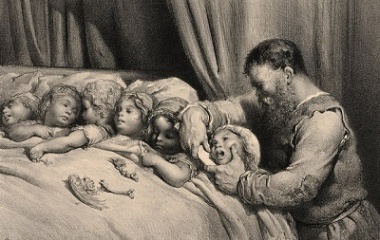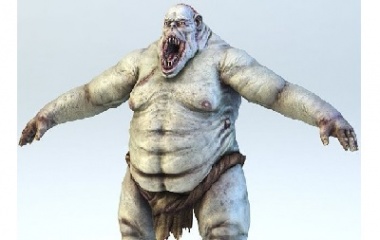What is an Ogre?
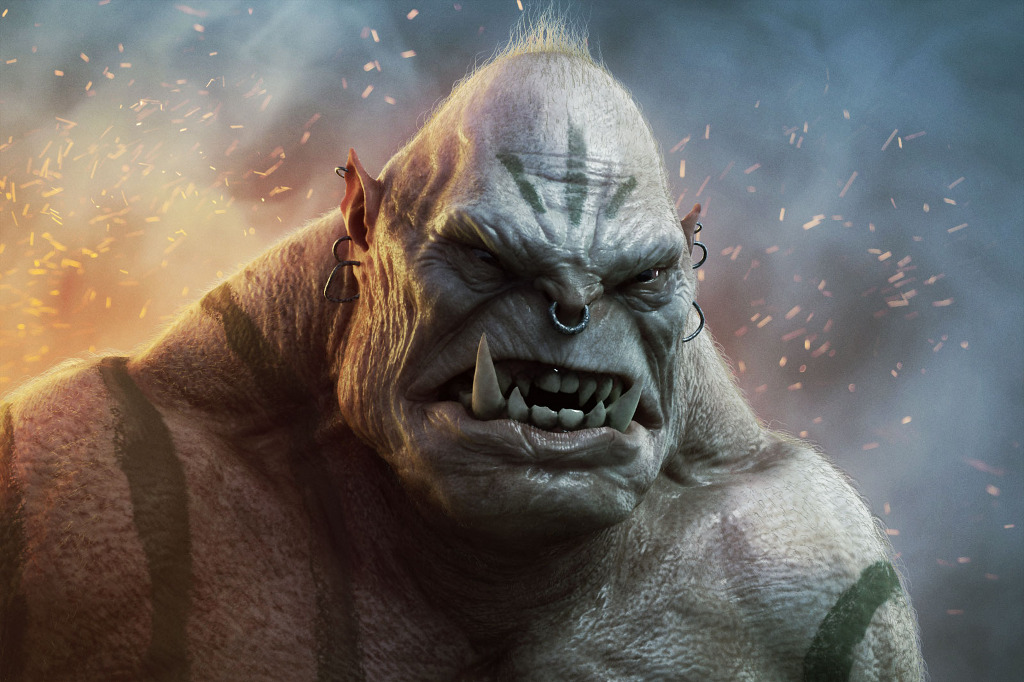
The word ‘ogre’ itself has its roots in the French language and is generally attributed to the Etruscan god Orcus. Although it is not certain that Orcus himself is the origin of these creatures, his brutish traits and cannibalistic tendencies were enough to make a connection that lasted from the late 12th century up until modern day. The first of these connections is believed to have come from a romance verse from the ‘Perceval, li contes de graal’ which was written by Chrétien de Troyes. The verse reads as follows:
come again,
to all the realms of Logres,
known as the land of ogres,
and destroy them with that
lance.”
It is thought that the ogres in this verse are the same ogres that lived in ancient Britain (Logres is thought to be King Arthur’s realm).
There is not much known about where these ogres may have come from, though they seem to have very close relations to both giants and cannibals in mythology. It is possible that these creatures are the same, or – at the very least – have a similar origin.
Physical Appearance
When it comes to ogres, everyone tends to agree on several key facts. First off, ogres are always seen to be noticeably large. They are man-like in appearance, but their size makes it clear that they are not human in nature. They are extremely tall (which tends give them associations with giants) and tend to be very stout. Their bodies are noted to be strong and sturdy. It is possible that the many muscles that make up the ogre’s stature are responsible for their stout shape.
In addition to their physical build, ogres are commonly noted as having an excess of hair. This only adds to their fearsome appearance and makes them look even more animalistic. The majority of these creatures are also noted to have a skin tone that is not similar to that of humans. The most common colors mentioned are usually green and blue.
Last but not least, ogres are known for their extreme hunger of human flesh. They are gruesome beasts that are feared by all – but especially mothers of infants and young children. An ogre can consume an astounding amount of flesh, which is partially why they were known for rampaging through villages and leaving death and destruction in their wake.

Famous Ogres in Mythology
Puss in Boots
Puss in Boots is a classic tale that has inspired many works of art and fiction since its release. The story follows a cat who is the inheritance of a young man who was born into a poor family. The cat helps the boy go from rags to riches by using trickery and manipulation to overpower the obstacles – and the ogre that gets in their way.
Puss in Boots also introduces some interesting ideas about ogres and what they were capable of. One of the most important to the storyline is that the ogre they have to overcome inhabits a castle. This shows that these ogres were not just giant brooding beasts that made their name through fear and intimidation like many other fairytale monsters. They were capable of communicating with humans and other creatures, able to hold positions of power and respect, and presumably able to manage other groups.
In addition to possessing intelligence, ogres seemed to posses magical abilities that allowed them to shapeshift into any number of creatures. In the tale of Puss in Boots, the ogre demonstrates this ability by transforming into a lion and is then tricked into transforming into a mouse. Once the ogre was transformed into a vulnerable state, Puss devours the mouse (ogre). This suggests that ogres could disguise themselves as familiar creatures that seemingly mean no harm, which only adds to their threat to early inhabitants of Britain.
Hop-o’-My-Thumb
Hop-o’-My-Thumb is the story of a young boy who uses his cunning to save himself and his brothers from multiple threats – including being eaten by an ogre and his family. There are many underlying ideas in this story, but what is perhaps most interesting is the knowledge of the perspective of ogres that can be gathered from this tale.
Ogres are shown to be intelligent creatures who show some civility and adhere to family units that are similar to that of human beings. The ogre in this story had a wife and several daughters, and lived in a house that was apparently furnished in a similar manner to human homes.
In the story, the ogre allows the boys to stay in his home for one night and sleep in the same room as his daughters. There is a catch however – as the ogre gets up in the middle of the night and attempts to kill the boys in their sleep. With shrewd anticipation, Hop-o’-My-Thumb and his brothers are able to avoid this end by tricking the ogre into killing his daughters by mistake. He chases the boys through the woods the next day seeking revenge, but quickly grows tired and falls asleep under a tree. Hop-o’-My-Thumb steals the ogre’s boots while he is sleeping and discovers they are magical. He uses the boots to live happily ever after and make a fortune for himself and his family.
There are several things that can be taken away from this story. The first is that the ogre relies on his intellect more than his sheer strength. It is presumable that he could have easily overpowered the children as soon as he found them outside his home and killed them then. Instead, however, he chose to lure them inside and lessen the amount of work he would have to do to attain his desired outcome.
Another assumption that can be made from this text is that ogres are often associated with magic and wealth. Similar to the Puss in Boots tale, Hop-o’-My-Thumb’s story ends with the boys discovering wealth and happiness after they have overcome the ogre in their path. This good fortune comes to them after they steal an item from the ogre, suggesting that ogres were in often in positions of wealth, power, and comfort.
Origin of the Ogre Myth
There are many different ogres in mythology of all cultures, which suggests that the creatures who inspired the creation of the ogre were either widespread or entirely metaphorical. There is, of course, the possibility that the ogre myths could be widespread because of the interactions between early cultures and the adaptations of lore as they interacted. The existence of ogres in countries like Japan, however, who remained largely isolated from other cultures makes this less likely.
Genetic Disorders
Those who look to science for answers to strange accounts of mythical creatures such as ogres propose that these monsters may have been inspired by people with genetic disorders. At the time, it was unlikely that a genetic abnormality could have been properly diagnosed, and the individual suffering from the condition would have likely been seen as inhuman.
Nephilim
There are many who believe that the story of ogres may have had a more biblical inspiration – specifically the Bible’s reference of Nephilim.
Nephilim were a race of giants that were supposedly created by the union of an angel and a human woman. They were known to be heroes in their day and were thought to be great warriors. There are many who believe that the giants who appear in the bible (like Goliath and Og) had ties to Nephilim.
There are also those who believe that Nephilim may have survived into more modern history. There seem to be references that the Nephilim managed to survive the Great Flood, which would have made it possible for these creatures to have interacted with the early cultures who recorded ogres in their fairy tales.
Metaphorical Learning Tool
When examining ogre mythology, it is also important to note that infants and children seem to be its ideal source of food. It is known that many legends and fairy tales have their roots in teaching children to mind their parents – thereby extending the number of youth that made it from infancy to adulthood.
The ogres were a supposed population that lived in the woods and towered well above the height of the average man or woman. This meant – from a child’s perspective – that not even a grown man could save them if they were unfortunate enough to run into an ogre while exploring on their own. This, combined with the fact that children were an ogre’s favorite meal, would have been more than enough to keep any curious children from wandering off too far.
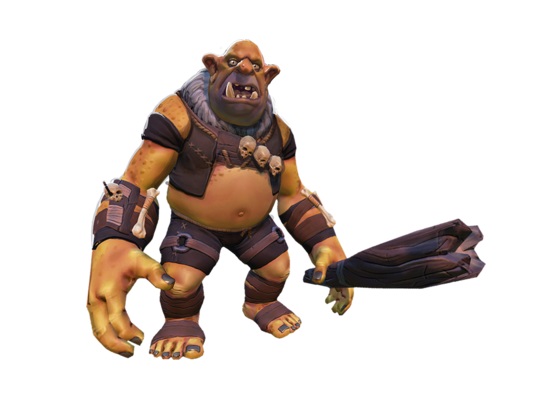
Possible Mythical Connections to Ogres
Orcus and the Ogre Legend
Orcus was an Etruscan god who was known for his intense craving of human flesh and his reign over the land of the dead (similar to Pluto and Hades). Orcus was depicted as being a large bearded giant with excessive hair – which is likely where the connection to ogres comes from. It is said that Orcus was actually a cyclops, which isn’t surprising considering they are another creature that is commonly related to ogre mythology.
Og – Last of the Giants
Though most people agree that Orcus was the inspiration for the name ‘ogre’’ there are those who think that these mythical monsters could have gotten their name from another source. Among these alternative sources is Og – the last of the Giants.
The legend of Og comes to us from Hebrew mythology and is recorded in the bible in Deuteronomy, Numbers, and Psalms. Og is said to be the last of the Rephaim (giants) and was known to be an enormous being. His bed was said to be approximately 13.5 feet in length and 6 feet in width. By comparison, a king bed today only measures about 6.7 inches in length by 6.25 inches in width! Those who have studied Og believe that he may have been between 9 and 13 feet in height based on clues left behind in ancient texts, but there are those who believe that he could have been significantly taller.
While there are no references of Og feasting on human flesh, he was known for being a feared ruler and the connection to the cannibalism of humans could have been made from the terrible bloodshed he caused. This, combined with his height, could have been the inspiration for the naming of the ‘ogres’ that inhabited early Britain.
Oiagros
Not much is known about Oiagros (also known as Oeagrus) other than that he was a river god and that he and Calliope fathered Orpheus and Linus. There are, however, legends of an area that was near the River Hebrus that was named ‘Oeagria’ after him. It is therefore feasible to presume that ogres were named after that area of land and have a connection to Oiagros for this reason.
Orco
In the Italian language, it appears that ogres appear as the word ‘orco.’ Their monster, much like an ogre, is a creature who has a craving for human flesh and many characteristics of traditional ogres. The many similarities lead many people to believe that the orco and the ogre are the same type of monster. This in turn leads many to believe that Orcus was the inspiration for both creatures because of the similarity in their traits and names.
Oni
The Oni are another breed of monsters that have startling similarities to the ogres of Britain. They are known to have oddly colored skin (usually red or blue), to be extremely hairy, to have large fangs, and to hunger for human flesh – especially that of infants and children. Many call the Oni Japanese ogres and suggest that their existence along with the existence of the Orco is proof that ogres were a common monster across many early cultures.







